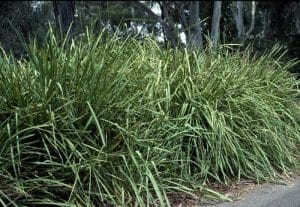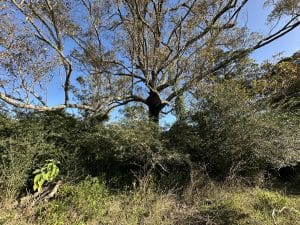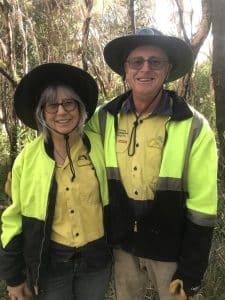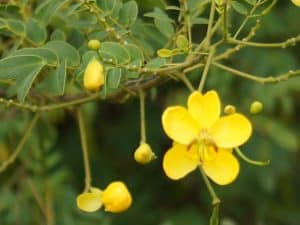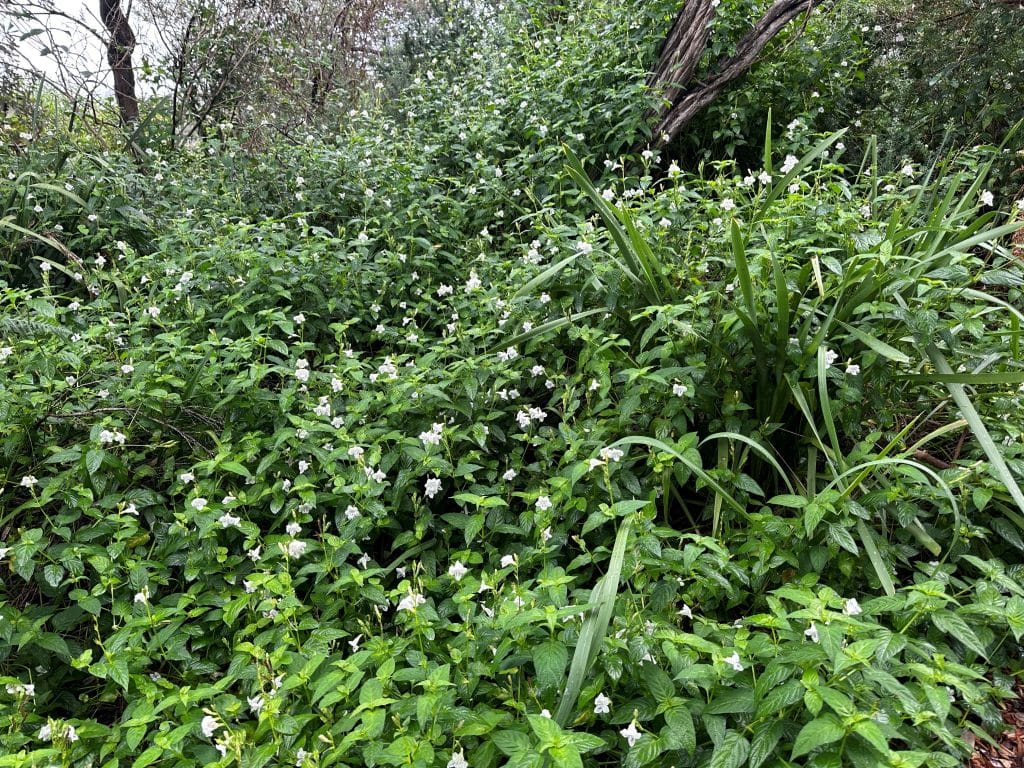 A new infestation of the dreaded Chinese Violet has been mapped at Boomerang Beach, Pacific Palms.
A new infestation of the dreaded Chinese Violet has been mapped at Boomerang Beach, Pacific Palms.
The 1000m2 infestation was reported in March in bushland adjacent to the beach, and is a recent addition to the area’s floral inventory.
Chinese Violet is a fast-growing perennial creeper that is a notifiable weed in our area. It is listed on the National Environmental Alert List.
Native to India, the Malay Peninsula and Africa, it is now a major weed in Malaysia, Indonesia and the Pacific Islands.
How can I spot it?
The plant forms dense mats of sprawling vegetation that can smother native vegetation to a height of three metres.
It is often found in sandy soils but may grow in other soil types, including those with low nutrient levels. The opposite leaves are slightly hairy, and bright green and range in size from 2.5-8cm long, by 1.5-4cm wide. The distinctive white bell-shaped or tubular flowers are borne in clusters and have purple patches on the throat of the tube. The plant flowers all year, but more commonly during warm, moist conditions.
Flowering is followed by seed production in club-shaped capsules that explode to release four flattened seeds. In this way, infestations are capable of spreading at a rate of 1-2m with each flowering event. The plant roots at every node that contacts the soil, and layers to form dense mats capable of smothering host vegetation. It can grow from seed or vegetative fragments, and is spread by green waste dumping, machinery/mowers/vehicles, seed may travel on the wind, water or animals.
What to do
It is a serious weed that has a fast reproductive rate, producing viable seeds within 10 weeks of germination, and one that we do not want to become established in the Mid Coast Region. All infestations are currently subject to destruction programs, as required under the Biosecurity (Chinese Violet) Control Order 2017, so if you spot this pesky plant in your wanderings, please report it immediately to MidCoast Council weed biosecurity on 7955 7777.


